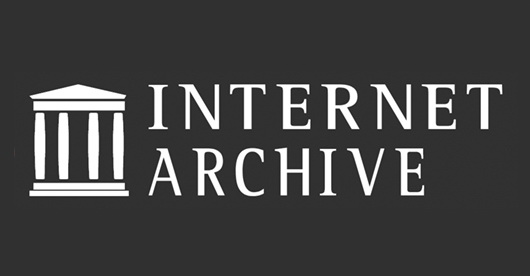Menu
Publications
2025
2024
2023
2022
2021
2020
2019
2018
2017
2016
2015
2014
2013
2012
2011
2010
2009
2008
2007
2006
2005
2004
2003
2002
2001
Editor-in-Chief

Nikiforov
Vladimir O.
D.Sc., Prof.
Partners
doi: 10.17586/2226-1494-2025-25-1-53-60
Usage of polar codes for fixed and random length error bursts correction
Read the full article
Article in English
For citation:
Abstract
For citation:
Ovchinnikov A.A. Usage of polar codes for fixed and random length error bursts correction. Scientific and Technical Journal of Information Technologies, Mechanics and Optics, 2025, vol. 25, no. 1, pp. 53–60. doi: 10.17586/2226-1494-2025-25-1-53-60
Abstract
Error correction during data storage, processing, and transmission allows for ensuring data integrity. Channel coding techniques are used to counteract these errors. Noise in real systems is often correlated, whereas traditional coding and decoding approaches are based on decorrelation which in turn reduces the performance limits of channel coding. Polar codes, adopted as a coding scheme in the modern fifth-generation communication standard, demonstrate low error probabilities during decoding in memoryless channels. The current task is to investigate the suitability of polar codes for channels with memory, analyze their burst error-correcting capabilities, and compare them with known error- correcting coding methods. To evaluate burst error-correcting capability, the method of calculating the ranks of each submatrix of the parity-check matrix of a fixed-size polar code is used. The burst error-correcting capability of polar codes can be improved through a proposed interleaving procedure. The analysis of the burst error-correcting capability is carried out for short-length polar codes. An analysis of the burst error-correcting capability of polar codes has been performed. A comparison of burst error-correcting capabilities of polar codes with codes defined by random generator matrix, Gilbert codes and low-density parity-check codes was conducted. An analysis of the decoding error probability shows that standard polar code decoding algorithms do not achieve low error probabilities. The same decoding error probability 0.01 as for Gilbert channel is achieved by polar code in binary symmetric channel with an unconditional error probability two times as high. From the analysis, it can be concluded that the burst error-correcting capability of standard polar codes is low. The proposed interleaving approach improves the burst error-correcting capability and allows achieving values close to the Reiger bound. Further research directions may include developing decoding algorithms for polar codes adapted for channels with variable packet lengths
Keywords: polar codes, channels with memory, Gilbert channel, interleaving
Acknowledgements. The paper was prepared with the financial support of the Russian Science Foundation, project No. 22-19-00305 “Spatial- temporal stochastic models of wireless networks with a large number of users”.
References
Acknowledgements. The paper was prepared with the financial support of the Russian Science Foundation, project No. 22-19-00305 “Spatial- temporal stochastic models of wireless networks with a large number of users”.
References
- Lin S., Li J. Fundamentals of Classical and Modern Error-Correcting Codes. Cambridge University Press, 2022, 840 p. https://doi.org/10.1017/9781009067928
- Bogatyrev A.V., Bogatyrev V.A, Bogatyrev S.V. The probability of timeliness of a fully connected exchange in a redundant real-time communication system. Proc. of the International Conference Wave Electronics and its Application in Information and Telecommunication Systems (WECONF 2020), 2020, pp. 1–4. https://doi.org/ 10.1109/WECONF48837.2020.9131517
- Bogatyrev V.A., Bogatyrev A.V., Bogatyrev S.V. Multipath transmission of heterogeneous traffic in acceptable delays with packet replication and destruction of expired replicas in the nodes that make up the path. Communications in Computer and Information Science, 2023, vol. 1748. pp. 104–121. https://doi.org/10.1007/978-3-031-30648-8_9
- Arikan E. Channel polarization: A method for constructing capacity-achieving codes for symmetric binary-input memoryless channels. IEEE Transactions on information Theory, 2009, vol. 55, no. 7, pp. 3051–3073. https://doi.org/10.1109/TIT.2009.2021379
- Wang R., Honda J., Yamamoto H., Liu R., Hou Y. Construction of polar codes for channels with memory. Proc. of the 2015 IEEE Information Theory Workshop – Fall (ITW), 2015, pp. 187–191. https://doi.org/10.1109/ITWF.2015.7360760
- Şaşoǧlu, E., Tal I. Polar coding for processes with memory. IEEE Transactions on Information Theory, 2019, vol. 65, no. 4, pp. 1994–2003. https://doi.org/10.1109/TIT.2018.2885797
- Proakis J.G., Manolakis D.G. Digital Signal Processing: Principles, Algorithms and Applications. Pearson, 2021, 1033 p.
- Gilbert E.N. Capacity of a burst‐noise channel. The Bell system technical journal, 1960, vol. 39, no. 5, pp. 1253–1265. https://doi.org/10.1002/j.1538-7305.1960.tb03959.x
- Elliott E.O. Estimates of error rates for codes on burst-noise channels. The Bell System Technical Journal, 1963, vol. 42, no. 5 pp. 1977–1997. https://doi.org/10.1002/j.1538-7305.1963.tb00955.x
- Moon T.K. Error Correction Coding: Mathematical Methods and Algorithms. Wiley, 2021, 992 p.
- Krouk E.A., Ovchinnikov A.A. Exact Burst-Correction Capability of Gilbert Codes. Informatsionno-upravliaiushchie sistemy, 2016, no. 1 (80), pp. 80–87. (in Russian). https://doi.org/10.15217/issn1684-8853.2016.1.80
- Ovchinnikov A., Veresova A., Fominykh A. Usage of LDPC codes in a Gilbert channel. Proceedings of Telecommunication Universities, 2022, vol. 8, no. 4, pp. 55‒63. https://doi.org/10.31854/1813-324X-2022-8-4-55-63
- Li L., Lv J., Li Y., Dai X., Wang X. Burst error identification method for LDPC coded systems. IEEE Communications Letters, 2024, vol. 28, no. 7, pp. 1489–1493. https://doi.org/10.1109/LCOMM.2024.3391826
- Fang Y., Chen J. Decoding polar codes for a generalized Gilbert-Elliott channel with unknown parameter. IEEE Transactions on Communications. 2021. V. 69. N 10. P. 6455–6468. https://doi.org/10.1109/TCOMM.2021.3095195
- Tal I., Vardy A. How to construct polar codes. IEEE Transactions on Information Theory, 2013, vol. 59, no. 10, pp. 6562–6582. https://doi.org/10.1109/TIT.2013.2272694
- Isaeva M.N., Ovchinnikov A.A. Correction of single error bursts beyond the code correction capability using information sets. Scientific and Technical Journal of Information Technologies, Mechanics and Optics, 2024, vol. 24, no. 1, pp. 70–80. (in Russian). https://doi.org/10.17586/2226-1494-2024-24-1-70-80













